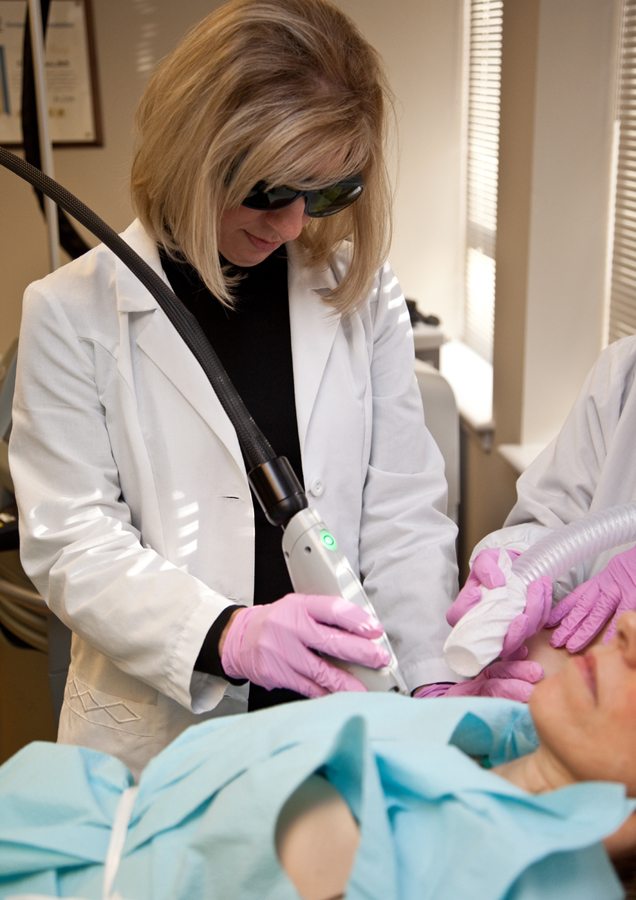Laser hair removal works by preferentially heating the hair shaft and surrounding follicle, while sparing the surrounding skin.
This works because darkly pigmented hair takes up laser light the same way that black asphalt absorbs sunlight. Black surfaces get hot in the sun because they absorb sunlight, just as dark hair becomes rapidly heated by a pulse of laser energy.
Most modern dermatologic lasers work by delivering a PULSE of light that heats the target we are aiming at long enough for it to become damaged, but not long enough for the heat to spread to the surrounding skin.
When targeting hair, we use pulses of light that last hundredths to thousands of a second, which is actually quite long in the world of skin lasers. Melanin pigment in the hair shaft or follicle absorb the laser light and become heated very quickly, damaging the follicle and stimulating inflammation. This inflammation signals the hair to go into a prolonged resting phase. This is a very good thing, because it could have worked out that this type of stimulation caused hair to grown (which can happen in very rare circumstances).
The laser does not kill the hair follicle in most cases, and this is a good thing since we need our hair follicles to help keep our skin healthy, and help us to heal from wounds, for example.
At any one time on our bodies (except for our scalps) most of the hair follicles in a given region are in the resting phase, which means that we don’t see a hair shaft in those follicles. By rapidly cycling between a growing and resting hair follicle, our hair stays a certain length without cutting it. This is a very good thing as having foot-long hair on our eye lashes, eyebrows or arms and legs could be quite inconvenient and uncomfortable. By falling out on a regular basis due to cycling from actively growing hair to resting follicles, our hair stays short. For this reason, we need a series of treatments to target all of the hair follicles in a given region of the body.

Resting follicles that don’t have a terminal, or growing, hair shaft and aren’t ‘seen’ by the laser because the laser targets the melanin pigment in the hair shaft. The hair shaft heats up very rapidly when treated with a laser, and transfers that heat to the hair follicle, causing damage and inflammation, thereby sending the follicle into the resting phase. A laser treatment can stimulate the ‘resting’ hair follicles to ‘wake up’, making the susceptible to a future laser treatment.
What about blond/gray/white hair?
Blond, white or gray hair is the holy grail of laser hair removal. So much of unwanted hair, especially in light-skinned people, is blond, gray or white. Unfortunately, lasers target the melanin pigment in hair, and thus do not work at removing non-pigmented hair. The only options for hair with no pigment is one of the alternative methods of laser hair removal.